At what altitude do enemy planes usually fly. At what altitudes do planes fly: a detailed briefing
Starting from the second half of the 60s, a song written by Alexandra Pakhmutova and Nikolai Dobronravov and called "Hugging the Sky ..." was quite popular in the Soviet Union. It was then performed by the wonderful singer Yuri Gulyaev. Many older people (especially from the aviation community) remember and love this song.
Such a good, soulful melody. But the point, in general, is not in it now. And I remembered it because when I thought about the topic of a new article, an association with interesting words from the lyrics of this song: “A pilot has one dream - height, height.”
These are the words that, one might say, hooked me. The site already exists more than a year, articles are being written, we have already talked about flight speed more than once, we even remembered low pass, and about such (anyone understands) the most important parameter as aircraft flight altitude somehow forgot.
Or rather, they didn’t forget, but forgot, because the question “why” should, of course, be addressed to me. I don’t know… I lost sight of that and that’s it…. However, now we will quickly fill this gap.
I don’t know what kind of dream the pilot from the song really has, but it doesn’t happen without a flight altitude. As you know, “one who was born to fly cannot crawl” (remember the pilot Kroshkin from the film “The Restless Economy”, which altered the famous phrase of Gorky’s “Song of the Falcon”?).
So, aircraft flight altitude, and how it is measured ... Well, what is height in this case, I think, is not a question. Anyone will say that this is the vertical distance from a flying aircraft to a point on the earth's surface, chosen by zero (reference point). Some question is what is this point.
The very principle of measuring height has been improved with the development of aviation (which is natural), and now there are several ways to measure. Once upon a time in maritime business there was such measuring tool, as exhibition . As a matter of fact simple rope with a load at the end, along the length of which it was possible to judge the depth of the place (something similar to height). Lot has long been turned into an echo sounder.
It is clear that for air travel a rope, as a measuring instrument, is, so to speak, unacceptable. However, a method of measurement that arose at the dawn of the development of aviation (whose history is much shorter than the history of the navy) exists to this day. This way barometric.
It is based on the natural phenomenon of atmospheric pressure drop with height. It falls in accordance with the conditional distribution of pressure, temperature and air density in the atmosphere. This distribution is called International Standard Atmosphere(ISA or ISA in English).
It remains only, taking into account the laws of this phenomenon, to display it visually, that is, for example, in the form of an index arrow moving along a scale graduated in units of height (meters or feet), and the device is ready to show aircraft flight altitude - altimeter. Its second name is the altimeter (in Latin altus - high), which is used more often abroad, but for some reason is considered obsolete in our country.
In principle, the altimeter was ready back in 1843, when the French scientist Lucien Vidie invented the well-known aneroid barometer. Then, of course, hardly anyone thought about its use in aviation. But when the planes began to fly, as they say, in full force, he turned out to be most welcome. After all, you can’t take a mercury barometer (having an even more respectable age) into the cockpit with you.
Although it is more accurate, but, of course, for an aircraft (with the possible exception of hot air balloon) is cumbersome and inconvenient. But the compact and sensitive aneroid is quite suitable, despite certain errors in measurements.
There are actually enough errors, as with any analog device. There is instrumental due to imperfections in the manufacture of the device, there is aerodynamic due to the inaccuracy of pressure measurement, especially at altitude, there are also methodological ones due to the fact that the device cannot, naturally, being at altitude in flight, take into account changes in pressure near the ground, as well as changes in temperature near the ground, which affects (and significantly ) on the pressure value. However, all these errors have long been learned to take into account.
Altimeter- it is, in essence, an aneroid barometer. Atmospheric pressure is supplied to its sealed case from the HPH (air pressure receiver), and in the device itself, the sensitive aneroid box, deforming, reacts to its changes, transmitting this reaction through a special kinematic system (it is also called transfer-multiplier mechanism) to the index arrow moving along the scale, which is what the crew sees in the cockpit of the aircraft.
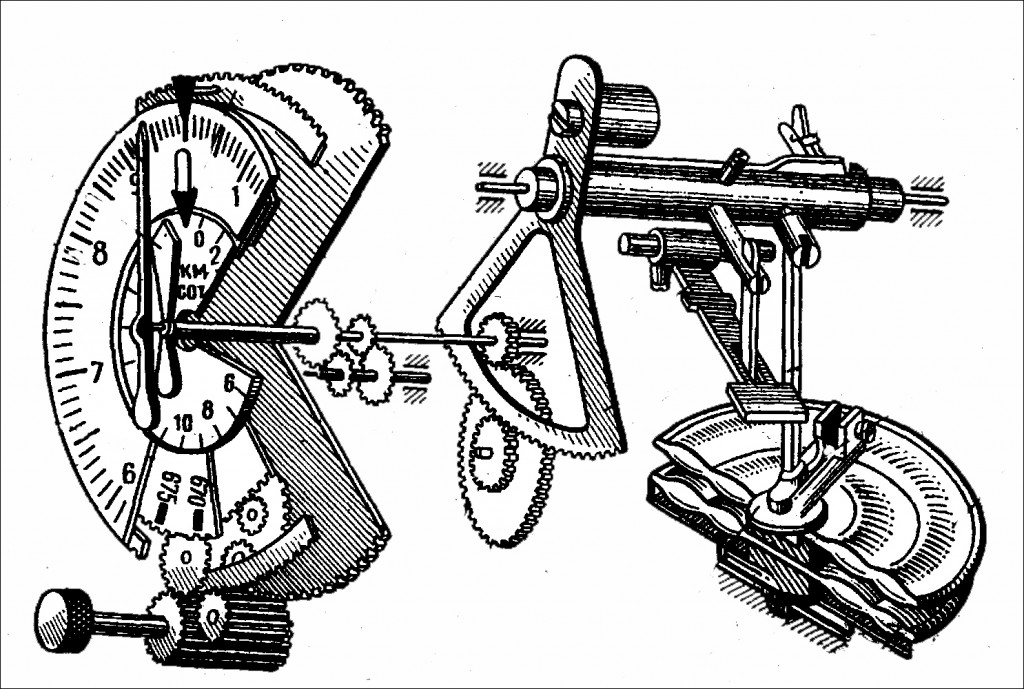
Scheme of the VD-20 altimeter.
All barometric altimeters(both ours and foreign ones) have a fundamentally the same design, but there are enough different variations depending on the type of aircraft, the order of use and additional functions.
First altimeters, used on older aircraft were not very convenient for visual use. Their front panel was very similar to modern car speedometers. The arrow was one with a measurement limit from 0 to 1000. Moreover, it did not describe a full circle (like the speed arrow on a car speedometer).
And under this arrow there were windows with numbers in them, exactly like a car odometer, only they showed, of course, not the distance traveled, but thousands of feet (meters) of height. That is, the pilot determined tens and hundreds of meters of height by the arrow, and thousands by the digital windows.
Conventional barometric gauges aircraft flight altitude (altimeters) all two-pointers (there are also three-pointers). Their dial is similar to a watch dial, only the number of digital sectors is not twelve, but ten. The long hand (minute ) makes one revolution per 1000 m altitude change, while the short hand (hour ) moves only one digital sector.
That is, the small arrow counts kilometers of altitude (that is, in fact, the full height), and the large one - meters, and these arrows can work both on one scale, and each on its own.
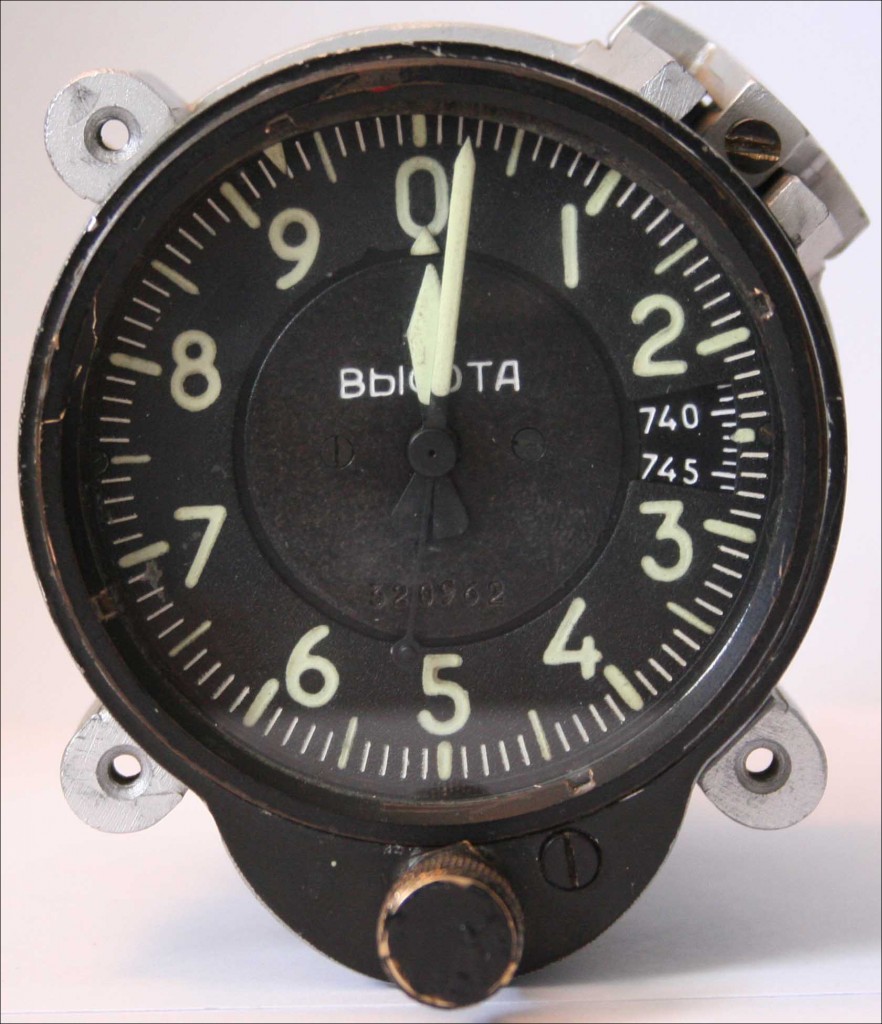
Altimeter VD-10.
The measurement limits of the instruments may be different. For example, altimeters VD-10, VD-17 measure heights up to 10 thousand meters and are installed mainly on aircraft whose maximum flight altitude is not very high. And such as, for example, VD-20 (it stands on TU-134, TU-154), VD-28 (it stands on MIG-29), VDI-30 (it stands on MIG-23) have large measurement limits, corresponding to the numbers in their name. That is, 20, 28 and 30 km of height, respectively. The letters in all their names mean " two-pointer altimeter».
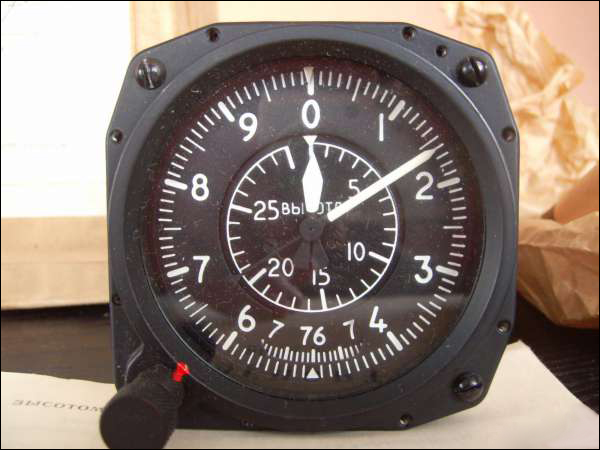
Altimeter VD-28.
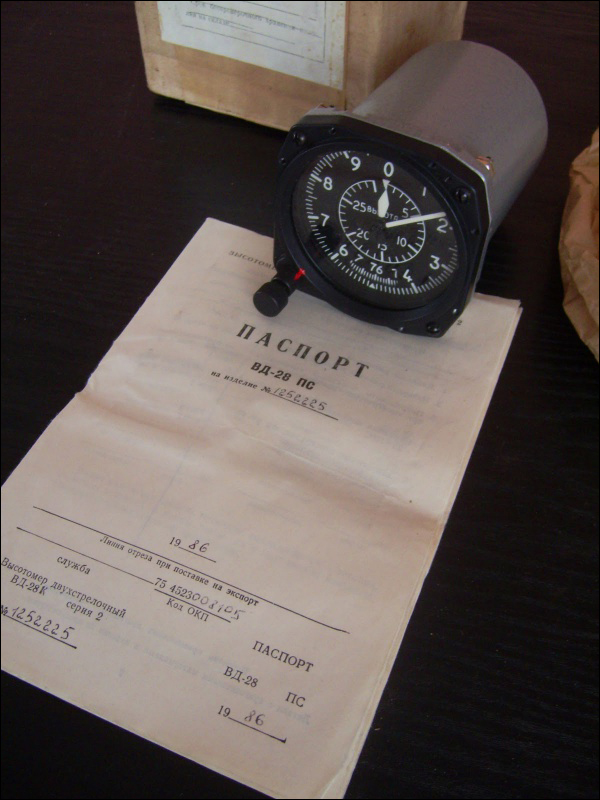
Altimeter VD-28.
There are also single-handers, when there is only one, large hand, but then there is always a window on the dial in which the total height is represented by numbers (similar to the old altimeters described above, but in a more convenient form). Such, for example, is the UVID-15 (F) altimeter. The letter F means "foot". This is due to the fact that the height in Russia and some other countries is measured in meters, and in the steel world in feet (1 foot is equal to 0.3048 m). Therefore, instruments can be graduated in meters or feet.
Or here is another altimeter, not ours, western. I don't know the brand, but it doesn't matter. Something else is important. On it, as you can see, there are already three windows with numbers.
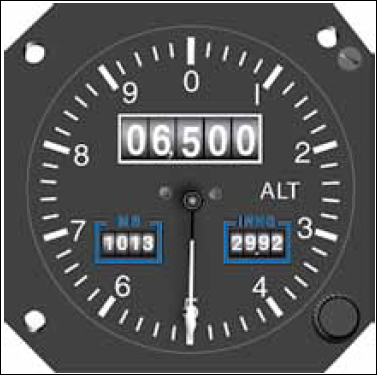
Altimeter with Kolsmann windows.
These windows (more precisely, the two lower ones) are called Kolsmann's windows named after the American inventor Paul Kolsmann (Paul Kolsmann, emigrated to America from Germany in 1923), who was engaged in aviation instruments. He just invented these windows. For what?
In fact, it is very important thing in control aircraft flight altitude, and on each altimeter there is at least one Kolsmann window. In addition, all these devices have a special rack kinematically associated with the scale, which is visible in this window. This scale is movable and numbers are applied to it, representing the value of atmospheric pressure.
This pressure can be represented on instruments in various units. In Russia, millimeters of mercury are used, in America and Canada the same value is in inches (inch-ah, one inch (inch) is equal to 2.54 cm), in Europe and other countries - in hectopascals (or millibars, which is the same) .
In that "western" altimeter, this pressure is shown for convenience in two windows at once (Kolsmann). On the left in hectopascals, on the right in inches.
For anyone measuring instrument, in order for it to carry out its functions, the presence of zero, the reference point, is required. For altimeter, respectively, there must also be some initial (zero) height. And since the device barometric, then this height must correspond to a certain initial pressure, for example, the pressure of the place where the flight begins. This very initial pressure is precisely set on the altimeter in the Kolsmann window.
Although in reality such "initial pressures" there are several in flight practice. Therefore, there are also several definitions of aircraft flight altitudes. The first one is probably true height H ist.. This is the actual flight altitude, measured from the point on the surface of the terrain over which the aircraft is currently flying. International designation AGL (Above Ground Level).
Altimeter, as a barometric instrument, does not measure actual altitude directly. He does this indirectly by measuring the pressure difference between the initial pressure and the pressure at the height he is at. We get the so-called barometric altitude. It can be quite different from the actual AGL height. It all depends on the pressure value set on the altimeter.
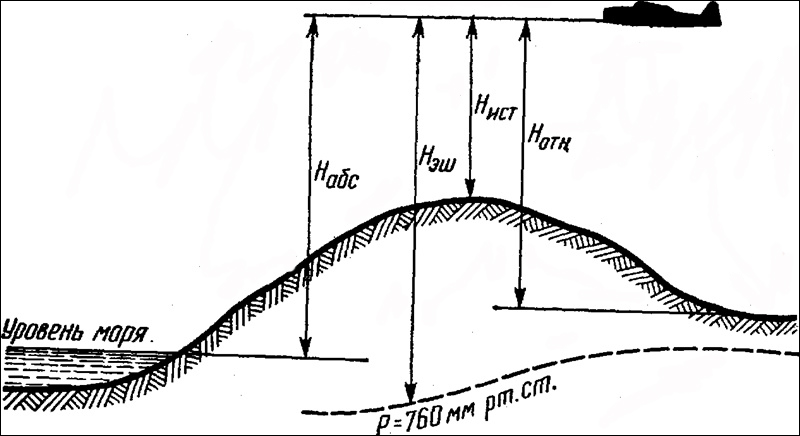
Types of aircraft flight altitudes.
Further height relative H rel.. It is measured from a certain conditional level, usually from the level of the airfield from which the aircraft takes off (or lands). In the international notation, this height is height and it corresponds to the pressure QFE ( Q-code F ield E levation), that is, the pressure at the threshold level of the runway.
Another height is the absolute H abs. . This is the altitude of the aircraft, measured from the conditional (mean) sea level. The international designation is altitude. This altitude corresponds to the pressure QNH ( Q-code N autical H eight) meaning the pressure at a given point on the earth's surface, reduced to sea level.
Just in case, I'll tell you what it means "reduced to sea level"(simplified). We have the above pressure at a given point on the surface. Let's say this is the pressure at the threshold of the runway, that is, QFE. Excess ( absolute height) of this point above sea level is known (usual topographic parameter ).
In addition, the dependence of the pressure drop with height is known. For example, for low altitudes, it is assumed that a change in height of 11.2 m corresponds to a change in pressure of 1 mm Hg. Art. (so-called barometric step) or ascent to a height of 800 m corresponds to a pressure drop of 100 hPa.
It remains to divide the height of our point from sea level by 11.2 (if we take mm Hg as a unit of measurement) and add the resulting pressure to the existing one (QFE, in this case). As a result, we have the pressure at the point if it were at sea level (that is, reduced to sea level).
It's interesting that mean sea level(international designation MSL) in a number of CIS countries, in Russia and Poland is carried out using the Baltic system of heights (that is, according to the level Baltic Sea in Kronstadt), but according to ICAO standards using the WGS-84 system, which do not completely match.
In addition, more aircraft flight altitude up to 200 m are called extremely small, from 200 to 1000 m small, from 1000 to 4000 m medium, from 4000 m to 12000 m large and above 12000 m - stratospheric.
The pilot, taxiing to the runway of the airfield with the help of the above rack, sets a certain pressure in the altimeter window, which is reported to him by the dispatcher (flight director). For Russian airfields, this is the QFE pressure, that is, the altitude on the altimeter is zero.
Interestingly, this is done only in Russia (and in some CIS countries). In the rest of the world, before departure, the altimeter is set to the pressure reduced to sea level, that is, QNH. And on the altimeter, before takeoff, they already have the height of the airfield above sea level (and not at all zero, like ours).
Then the plane takes off and during the flight the pilot at certain stages of the flight puts on altimeter the corresponding pressures, which are reported to him by the dispatcher (flight director). This exhibition procedure itself is strictly regulated, because flight safety directly depends on it.
“Airplanes live only in flights” - do you remember these words from the famous song by Yuri Antonov? Life is in the air, and on earth, and underground, and under water. So at what altitudes do planes fly?
Further, higher, faster
During the arms race, this motto was used in the domestic aircraft industry. And it should be noted that with great success. For example, such an exhibit, which few people remember as the Su-100, was designed as a strategic bomber, but could evade the pursuit of any fighter that existed at that time and long time later. Unfortunately, due to bureaucratic delays, he remained a prototype.
For the military, high speed and flight altitude are fundamental, since there is a need to remain difficult to reach for ground air defense units. At what altitudes do aircraft in this category fly?
Flight altitude
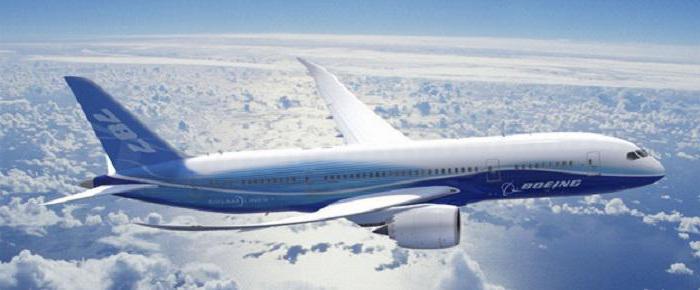
The maximum flight altitude, or ceiling, for each type of aircraft is calculated and laid down based on its purpose. If it is a fighter, its flight altitude should be as high as possible. After all, he will have to "get" the enemy, who may try to get away from the chase, gaining height. Some developed aircraft have a practical ceiling of up to 40 kilometers above sea level, although such heights are impractical. Most modern fighters are being developed for use at altitudes up to 20-22 kilometers.
Transport and passenger airliners
These aircraft have a different scope, so the requirements for altitude and speed of their flight are different. There were single developments of passenger airliners using supersonic speeds (such as the Concorde), but they were abandoned due to the impracticality of their use in this area. However, the flight speed of jet transport and passenger aircraft is quite impressive.
For example, the well-known military transport aircraft Il-76 has a cruising speed of 750-800 km/h. This means that the maximum speed is very close to supersonic. And the practical ceiling reaches 12,000 meters above sea level. The estimated altitude for this type of aircraft is 8-9 km. Most modern large aircraft designed to carry goods and passengers over long distances have similar or close to them flight characteristics.
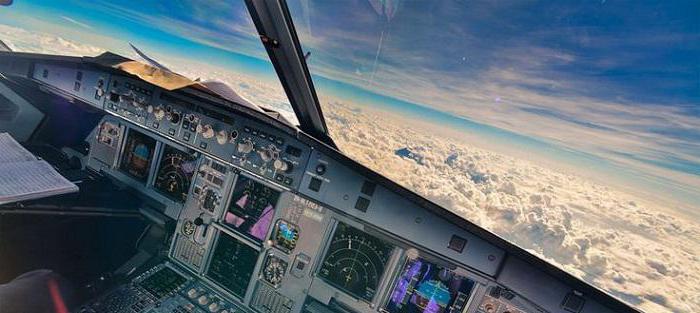
However, the speed measurement system we are accustomed to for aircraft flying at high altitudes will not always be informative enough. at altitude is often measured by the number "M", corresponding to a high flight altitude, this indicator has great importance, because on high altitude decreases, which means that the speed of sound, expressed in km / h or m / s, also decreases. Therefore, at the same speed, expressed in kilometers per hour, with a change in altitude, the speed expressed in the number "M" will change. For ordinary person this seems unimportant. But to overcome the speed of sound, a significant increase in the strength of the structure, and hence the mass of the aircraft, as well as the specific shape of the wing, will be required.
For example. An airplane flying near the surface of the earth at the speed of sound will cover a distance of approximately 1220 kilometers in one hour. An airplane at an altitude of 10 km, flying at the speed of sound, will cover only 1076 kilometers in an hour. Purely for practical reasons, it would not make sense to accelerate a non-military aircraft to the speed of sound and significantly increase its flight altitude.
Local airlines and other aircraft applications
This area of aviation differs significantly from those discussed above. The flight range of aircraft flying on local airlines is measured in several hundred kilometers. Most often, such aircraft are equipped with propeller engines, which have a significantly lower fuel consumption per kilometer.
At what altitudes do aircraft fly? we are talking now, depends on their purpose. In any case, here we are not talking about tens of kilometers and often not even about kilometers. For this category, low echelons are provided. Usually this is an altitude of 600, 900, 1200 meters for local airlines. Aircraft used in agriculture for the cultivation of land, rarely rise above several hundred meters, and the direct execution of tasks occurs from a height of several tens of meters. Similar flight altitudes prevail in aircraft used to fight fires.
If you do not have serious problems with the vestibular apparatus, you will enjoy flying. And while driving aircraft you will get an incomparable experience. And it doesn't matter at what altitudes the planes fly. You will feel at your best.
At what speed and at what altitude are pleasure flights?
Usually pleasure flights take place at altitudes from 200 to 600 meters. But you can understand the aircraft at a height of up to 3000 m. The choice of altitude and speed depends on the purpose of the flight and the desire of passengers. During sightseeing flights, we choose the optimal height so that passengers can see the landscape and feel the peculiarities of flying on a small aircraft. In addition, the flight altitude limit may depend on the requirements of the air traffic control services in whose area of responsibility the flight takes place.
Cruise speed, at which most pleasure flights take place: 180-220 km / h. Max speed, which our planes can develop - 300 km / h.
How safe are pleasure flights?
Pleasure flights on modern aircraft that have undergone thorough technical control and have a Certificate of Airworthiness, which confirms the established level of safety in civil aviation The RF is rightfully considered much safer than traveling by car.
On board the aircraft there is the necessary emergency equipment that meets the requirements of Civil Aviation. Even in the event of an emergency, the passenger will be provided with the maximum level of safety.
Which flight to choose for the first time?
If you are flying by plane for the first time, it is better to choose a calm pleasure flight along the route.
For those who feel the strength and courage in themselves to experience unusual new sensations, we offer a flight to the zone with the performance of simple aerobatics. At the same time, you will be able to feel positive and negative g-forces, learn what elements future pilots work out in piloting classes.
What do you need to take with you on a flight?
Traveling by plane does not require any special uniform or equipment.
Comfortable clothing and shoes that do not restrict movement are optimal.
In order to capture the most interesting moments of your air travel, be sure to take a camera and a video camera on the flight.
Where to store and maintain your own aircraft?
The aircraft can be stored at any airfield or landing site with an equipped parking area. Usually such places are registered in the prescribed manner, and must have an aerodrome passport or a landing site passport. Aircraft maintenance personnel must have an appropriate certificate and permit for aircraft maintenance.
What fuel do planes fly on?
Yak-18T and Corvette aircraft have piston gasoline engines and fly on aviation or automobile gasoline with an octane rating of at least 92. In addition, there are aircraft with piston diesel engines, turboprops and jet engines. They run on aviation kerosene.
Can I fly the plane myself on my first flight?
Yes, in the very first flight of your choice, after a short theoretical briefing, you will be able to fly the aircraft in level flight mode under the control of an instructor pilot.
What is the difference between domestic aircraft and imported ones?
Domestic aircraft in relation to imported ones have a number of advantages, both economic and operational. For example:
- domestic fuel is cheaper than foreign;
- for Russian aircraft, it is easier to get interchangeable spare parts and equipment;
- many problems arise with the repair and maintenance of foreign equipment due to the lack of parts and materials, as well as repair specialists, etc.
Which minimum height Can an airplane fly from the ground?
The minimum flight altitude in the pilot areas for piloting technique development, according to the instructions of the BELOOMUT landing site, can be at least 50 meters. Most flights are not lower than the calculated safe altitude, which depends on the terrain, artificial obstacles on the ground and other factors.
Can I take pictures during the flight?
Photo and video shooting is allowed during the flight. Be sure to bring a camera or camcorder with you, or better yet, both. The pilot will show you the most beautiful places for shooting.
Are there any health restrictions for flying?
There are no restrictions for flying as a passenger, but for training flights and obtaining a pilot's license, there are restrictions and health requirements described in the Federal Aviation Regulations (FAR) MOGA-2002. You can find them in our library.
When can you fly on an airplane without an instructor?
According to the practical training program, already after 15 flight hours you will be able to perform the first solo flight if you have a valid medical certificate (VLEK).
What are the benefits of owning a plane?
As the owner of the aircraft, you, first of all, can move independently on it. And of course, to enjoy flying at any time convenient for you. Having your own aircraft, you can fly to any airfield and land on any landing site, or even on a piece of land or water, if the capabilities of the aircraft allow it and you have the appropriate clearance. You can fly your own aircraft only if you have a pilot's license. On the basis of the flying club "Aist" there is a school of pilots, graduates of which receive a civil aviation pilot's certificate.
Which airports can accept a private jet?
A private jet can land at any airports, airfields and landing sites. In order to land at any airfield, it is necessary to submit a flight plan an hour before departure, to have fresh aeronautical and meteorological information on the upcoming flight.
Where can you fly to in the suburbs?
There are a lot of interesting and beautiful places for sightseeing tours on airplanes. The choice of the route depends, first of all, on your desire, on the weather and time of year. The pilot can suggest the best route for you based on the duration of your flight (15, 25, 30, 60 or more minutes). If you have already decided where you would like to fly, you can plan the route yourself.
If you want to make a landing flight, this is also possible. Discuss the flight route with the pilot in advance, as landing at another airfield requires coordination with air traffic control services and obtaining permission.
What kind of overload does a person experience during a flight?
During the flight, at will, overloads from +3 to -1.5 can be demonstrated, which are safe for an unprepared human body. With positive g-forces, you will feel an increase in body weight and “pressing into the seat”. At +3 G you will feel like your weight has tripled. With negative g-forces, you will feel the so-called "weightlessness" state, which astronauts experience while in orbit.
Is it possible to land a plane outside the airfield?
Landing off the runway is usually carried out in the event of an emergency. For example, in the event of an engine failure, it is possible to safely land an aircraft off the airfield. But in a normal situation, for land aircraft, a planned site or a prepared airfield is required, for hydro-aircraft, any section of the water surface of the appropriate size is suitable in accordance with the Flight Manual (AFM) of the aircraft.
What is the difference between flying on the Yak-18T and flying on a large passenger plane?
On a light sport aircraft, you can fully experience the feeling of flying, which is not available in passenger aircraft travel. Our flights take place at low altitudes, which makes it possible to see all the details of the landscape. The front seat offers excellent visibility. In addition, you will be able to see how the pilot controls the aircraft, how the takeoff and landing takes place, hear the dispatcher's commands in the headset, be able to negotiate during the flight, and even control the aircraft yourself. The light aircraft is very maneuverable, which provides additional opportunities for visibility and aerobatics. You will be able to experience various overloads, including weightlessness.
How many days before the expected date of the flight can I buy a gift certificate?
You can purchase a certificate at any time, but not less than a day before the expected date of the flight. Please agree with us the date and time of the flight by phone or email.
How is the qualification exam for a pilot's license taken?
The exam consists of two parts: practical and theoretical.
The practical exam is taken at the flying club by an instructor pilot. During it, the piloting skills acquired during training are tested.
The theoretical exam is taken in writing at the Aviation Training Center (ATC) in Moscow.





